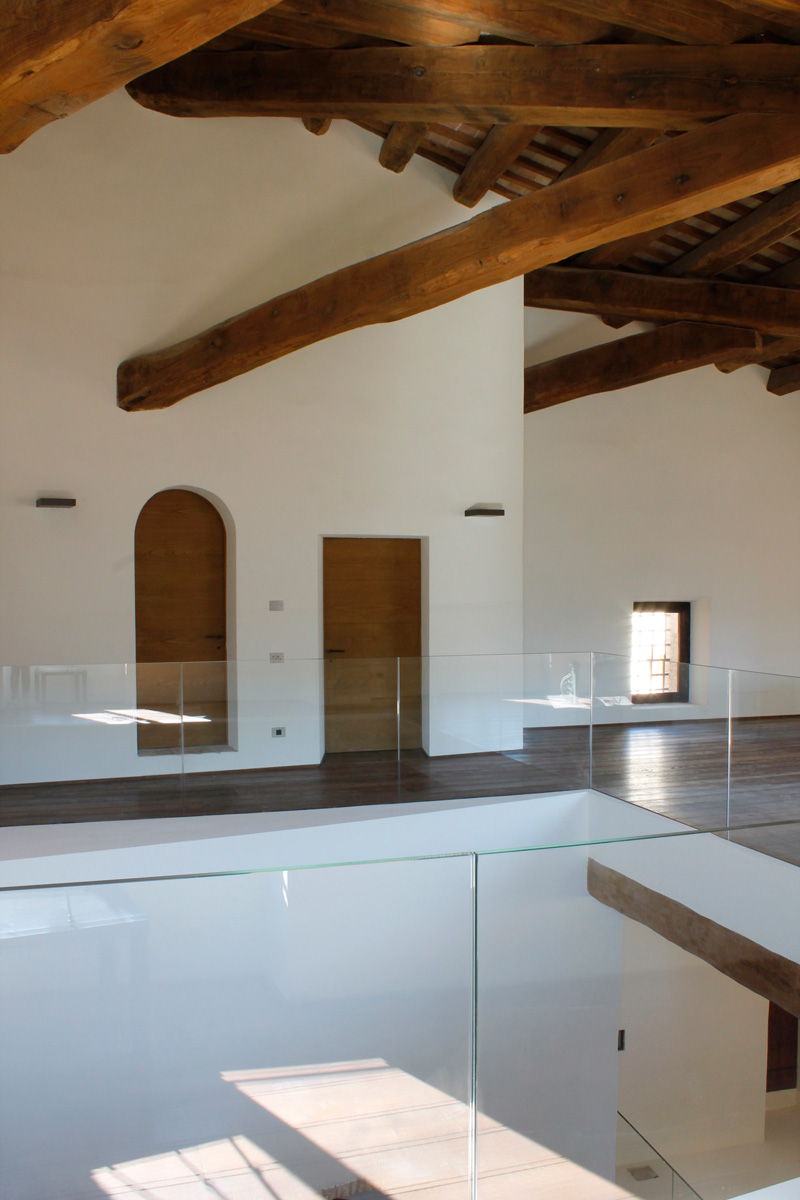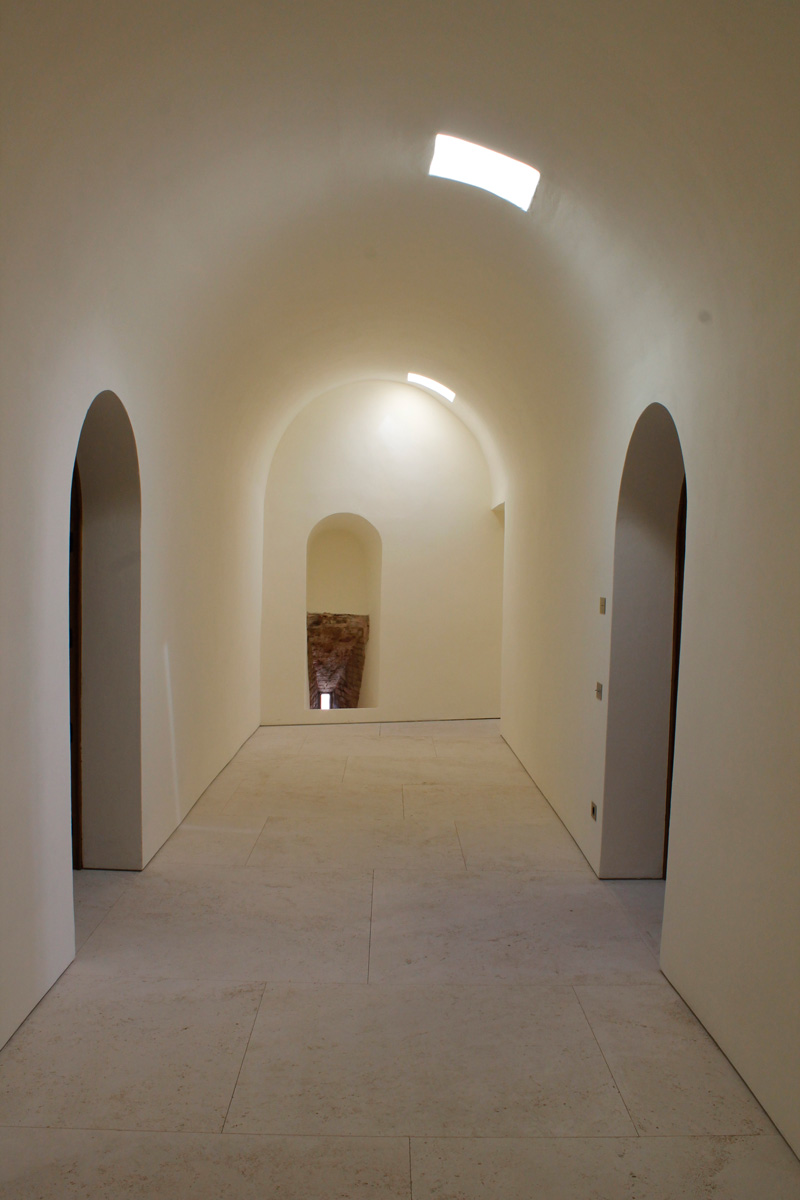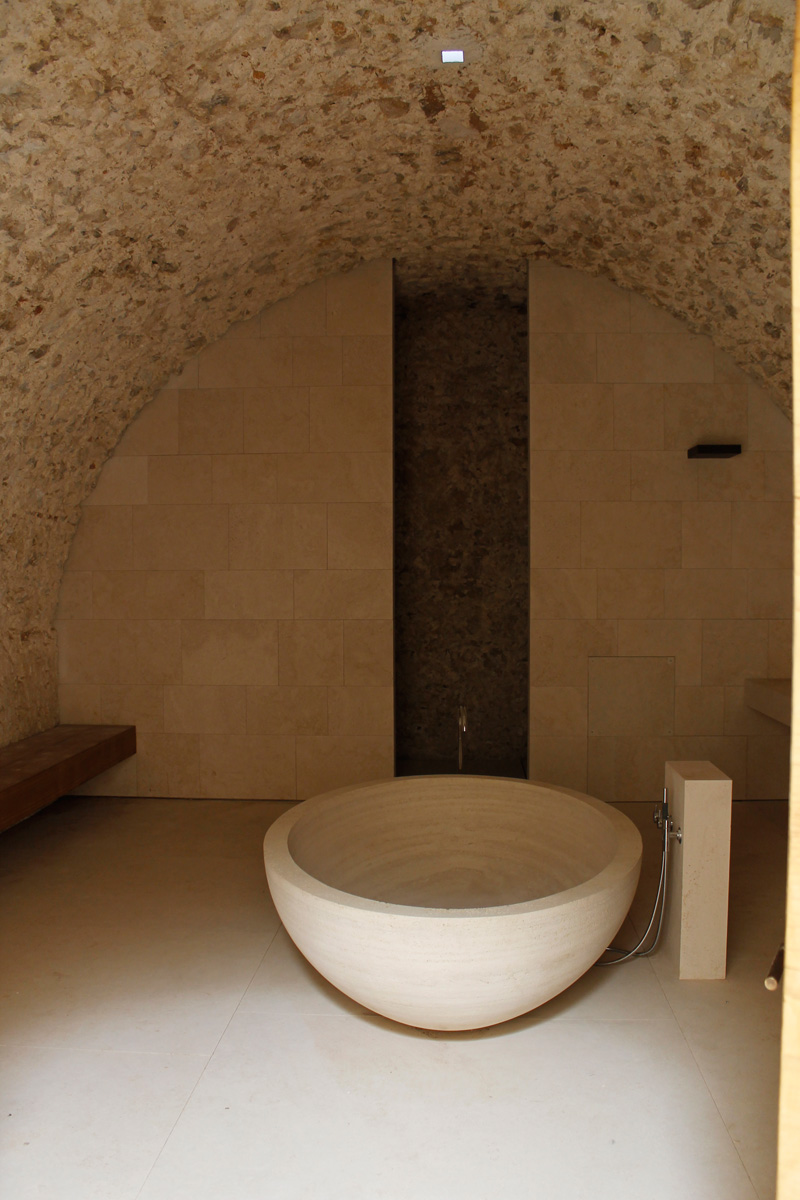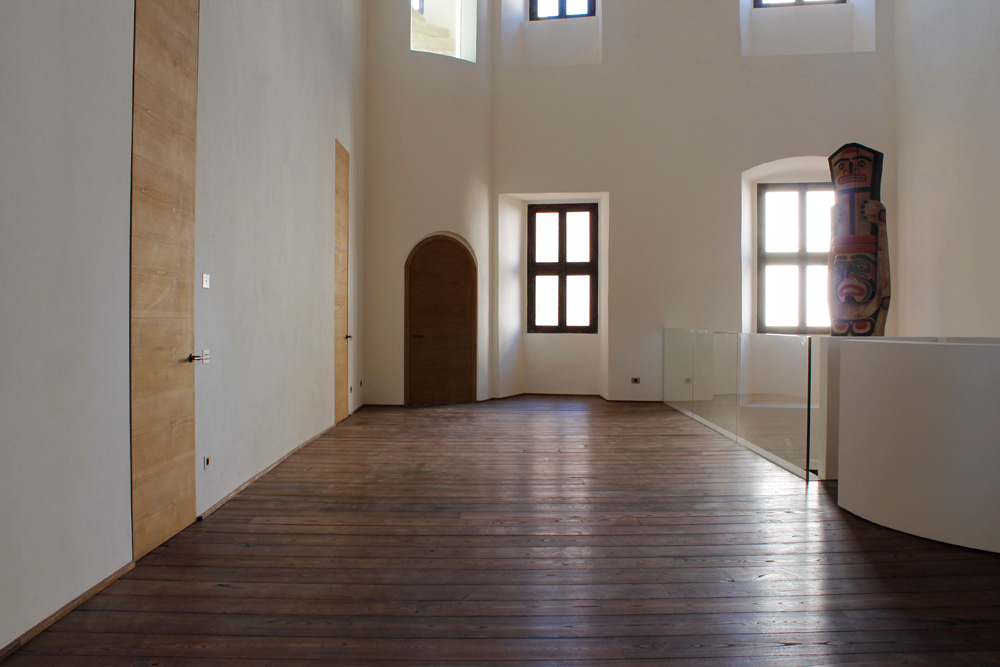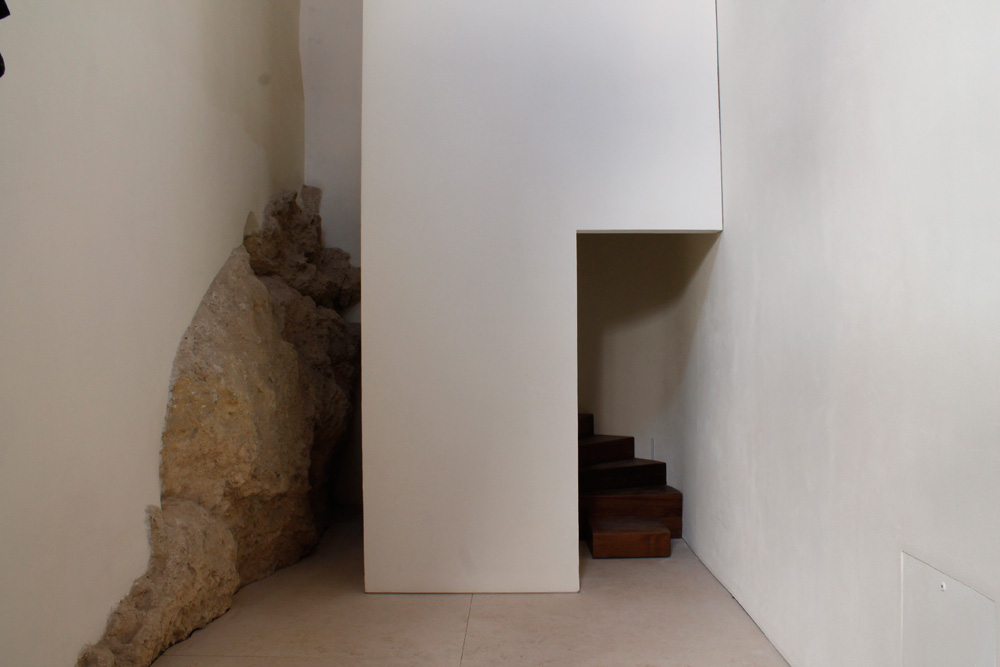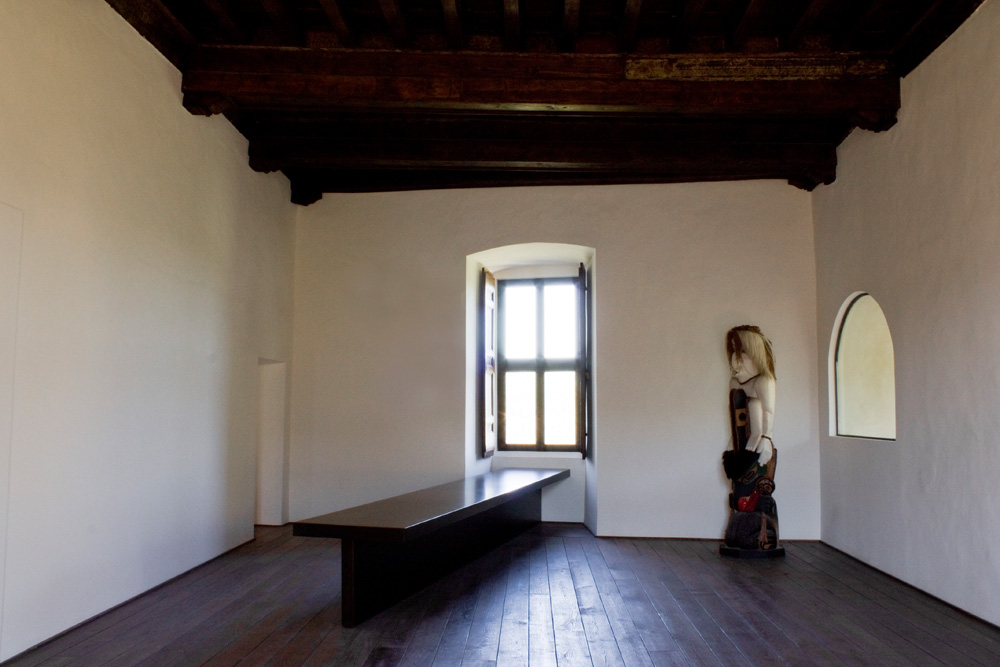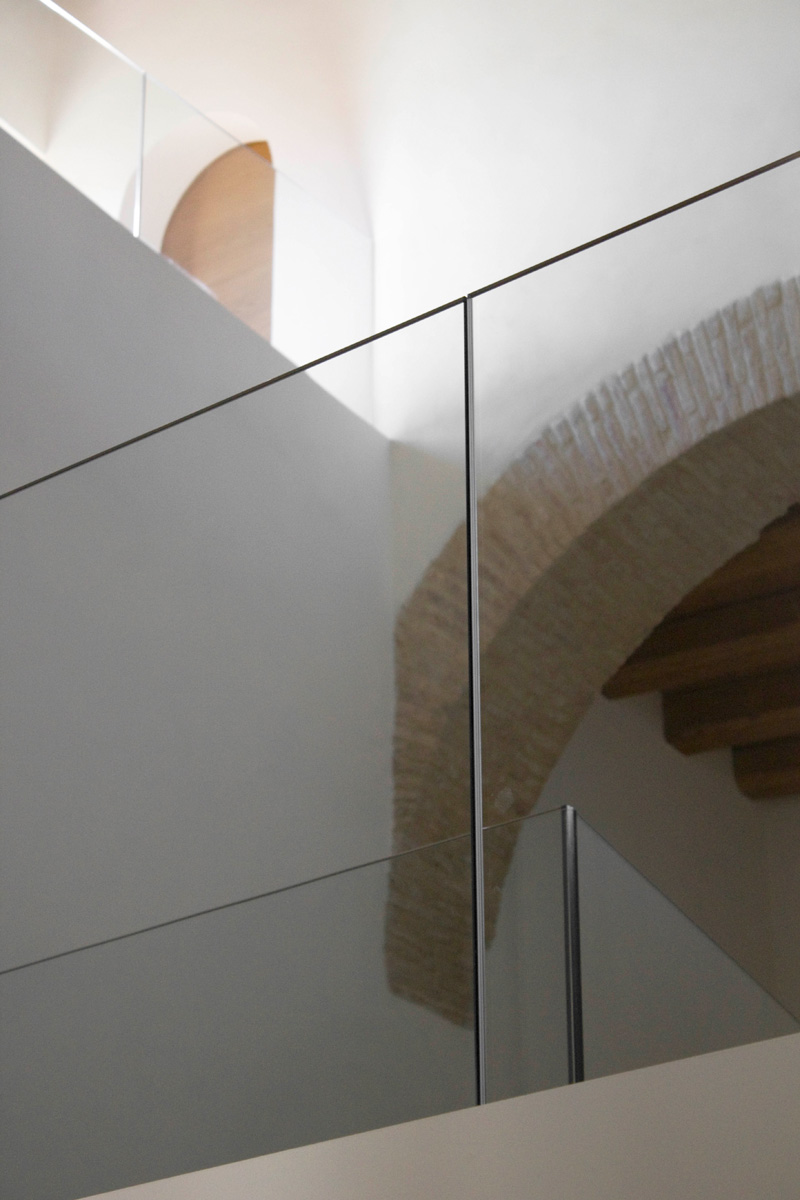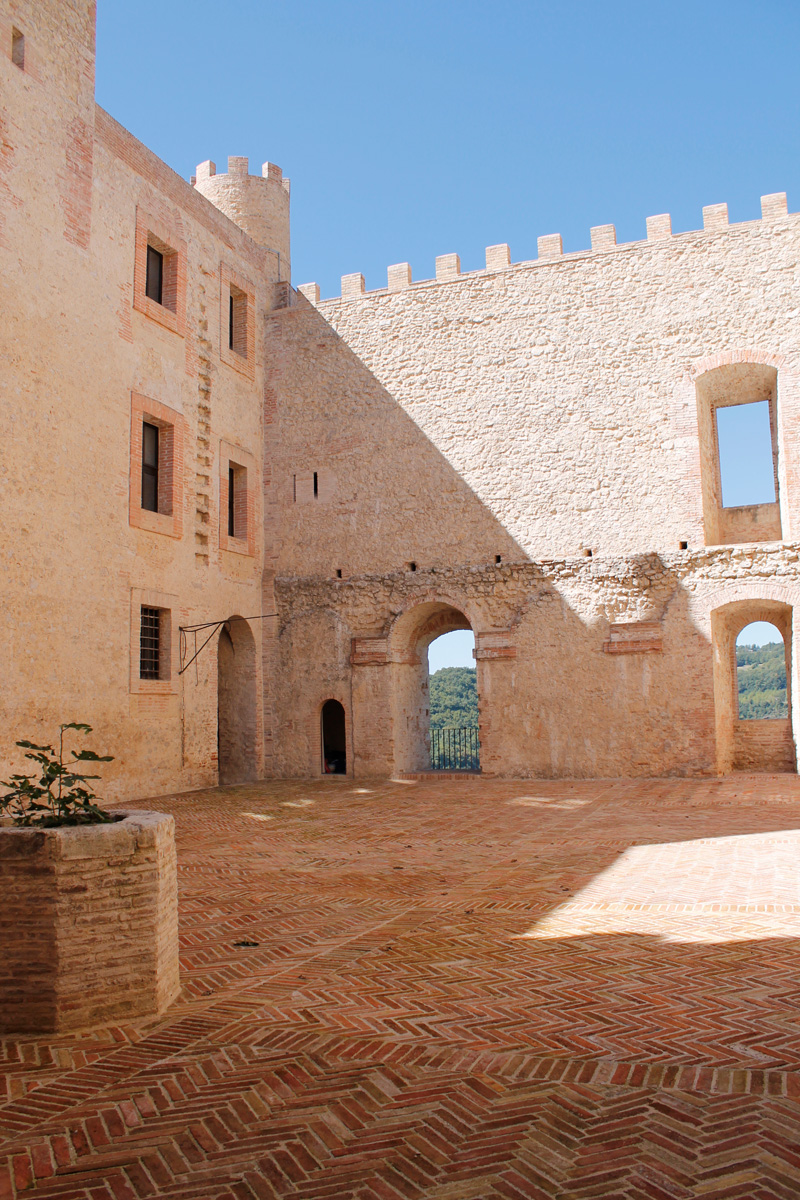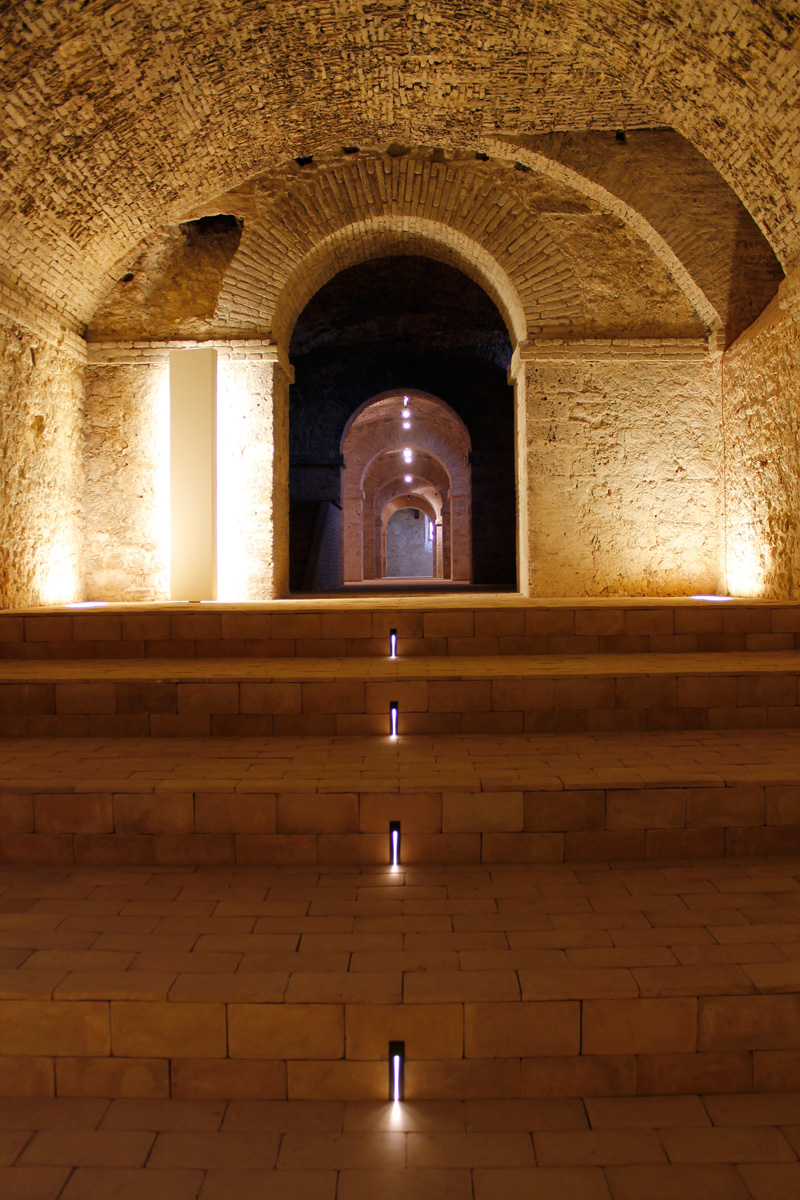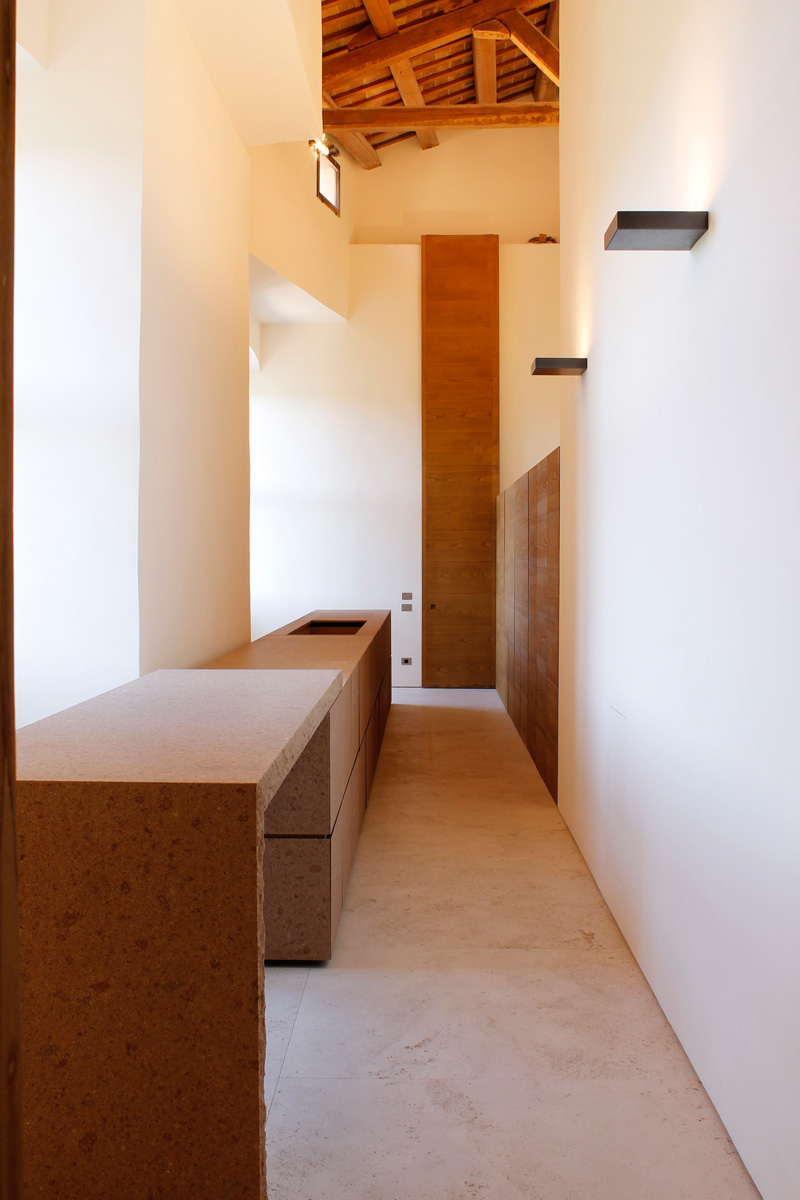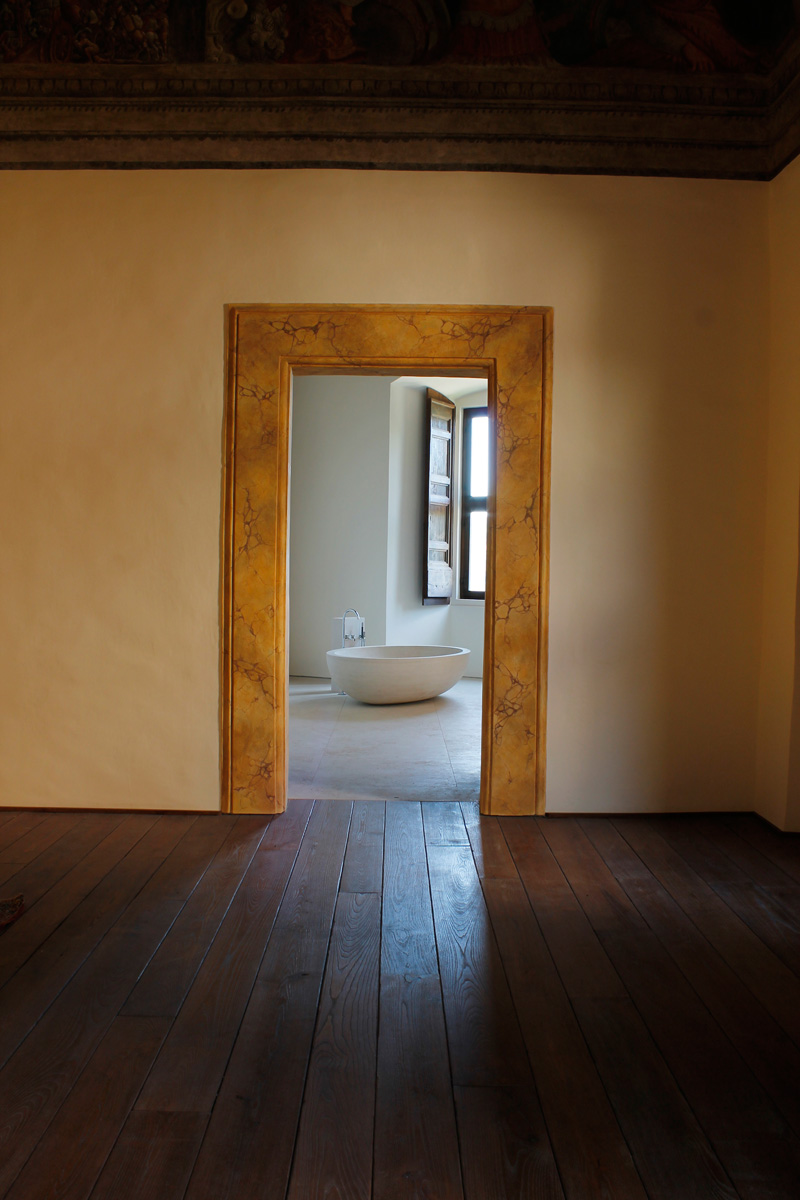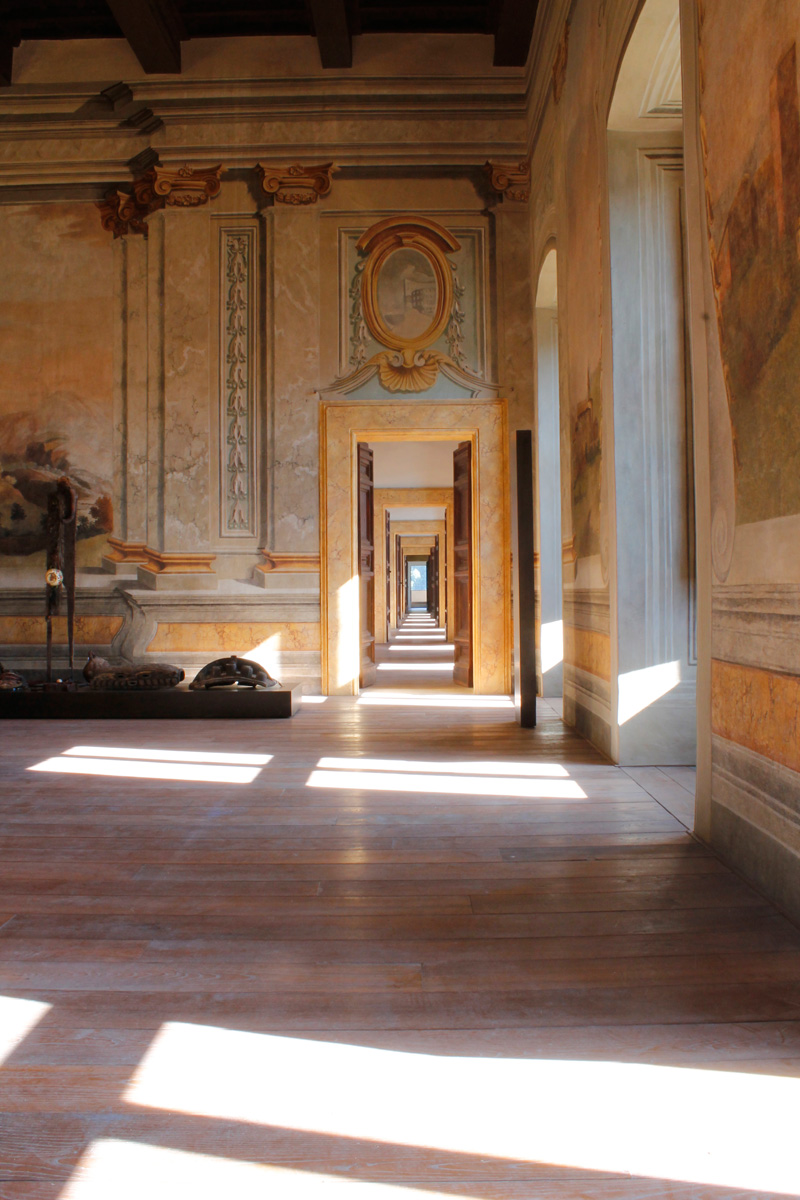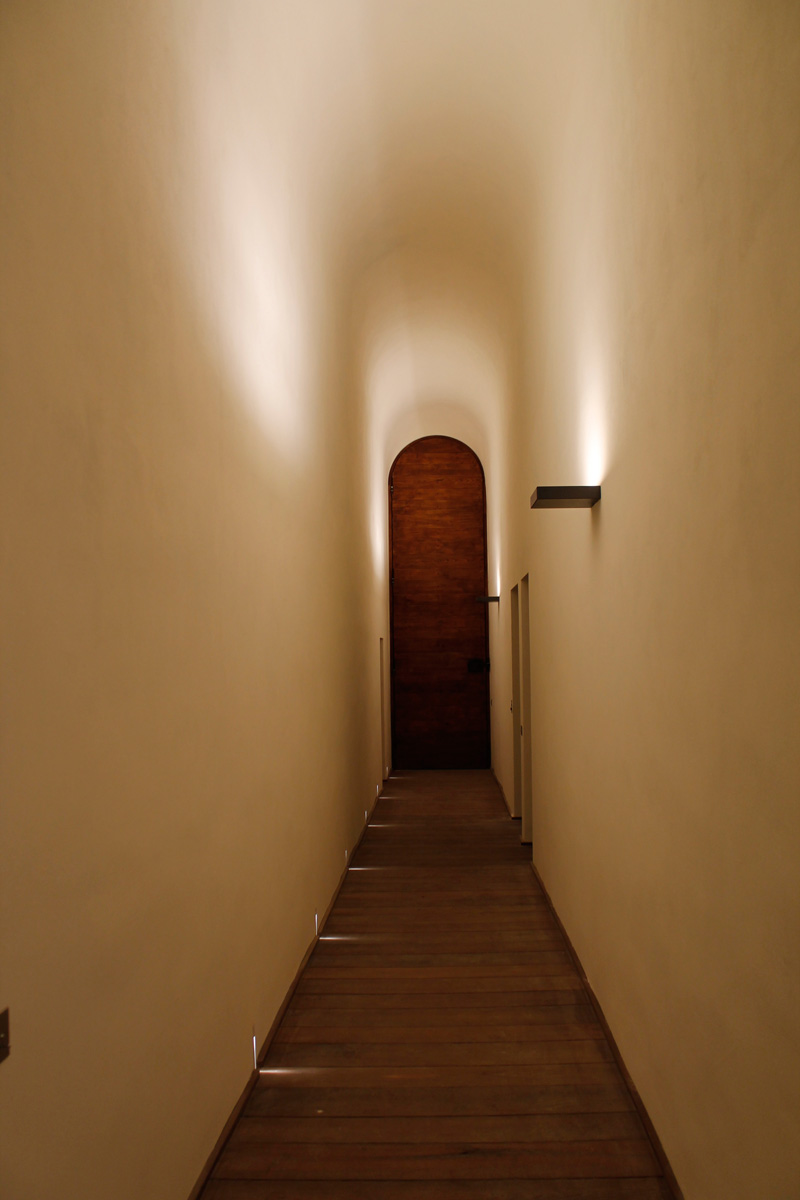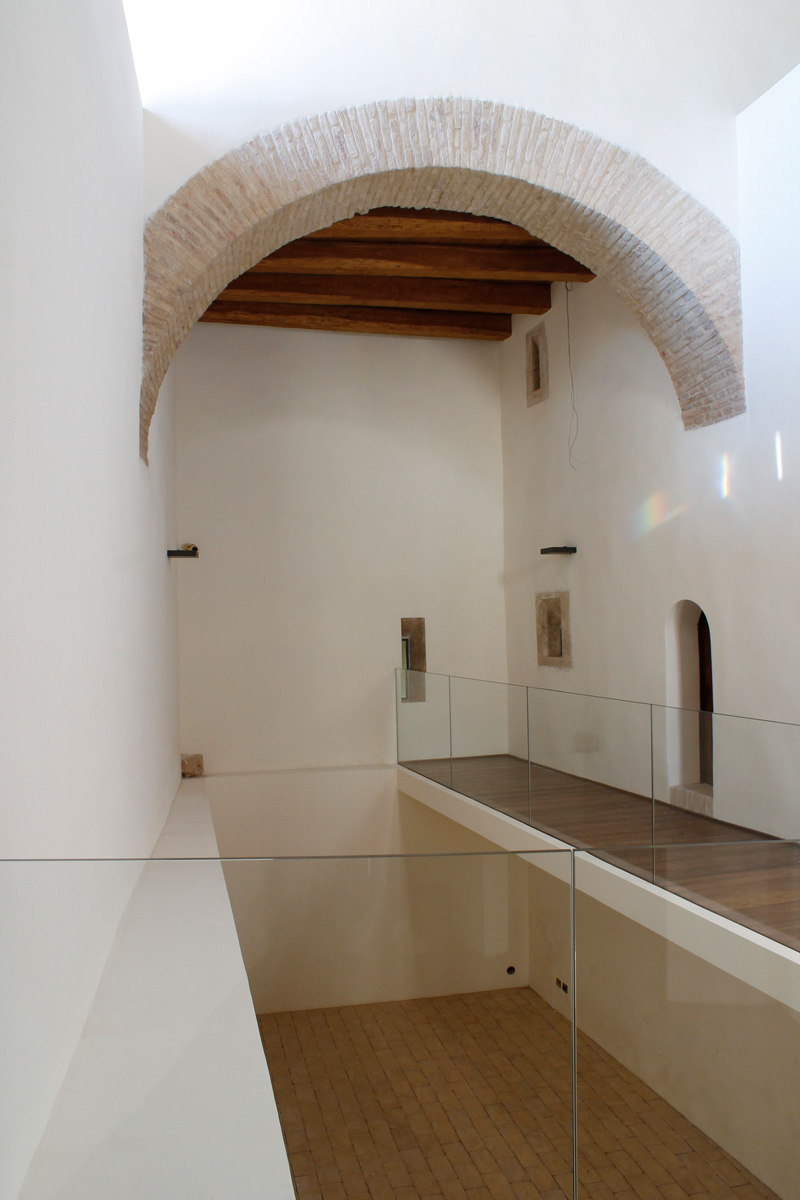Rocca Sinibalda Castle
Rieti, 2013
Occupying an area of 30,000 square feet, the original castle dates back to the 12th century.
Originally built in 1084 it was turned into a magnificent fortress during the late Renaissance by Architect Baldassarre Peruzzi.
The client’s brief to Claudio Silvestrin Architects was to transform it into a contemporary residence for a family of four with guest rooms and over 10,000 square feet of exhibition space to accommodate the display of Shamanic works of art.
The intention was to achieve a sensible restoration in the areas which are listed by the Italian heritage body and, at the same time, transform the non-listed areas into new contemporary spaces in timeless elegance.
The Architect’s intervention had to be “invisible”, Claudio Silvestrin calls it: the minimalness of the ‘ I ‘.
Once completed, the castle seems at first glance as if it is untouched, even though the building took almost nine years of work, perseverance and dedication.
Rocca Sinibalda Castle
Rieti, 2013
Occupying an area of 30,000 square feet, the original castle dates back to the 12th century.
Originally built in 1084 it was turned into a magnificent fortress during the late Renaissance by Architect Baldassarre Peruzzi.
The client’s brief to Claudio Silvestrin Architects was to transform it into a contemporary residence for a family of four with guest rooms and over 10,000 square feet of exhibition space to accommodate the display of Shamanic works of art.
The intention was to achieve a sensible restoration in the areas which are listed by the Italian heritage body and, at the same time, transform the non-listed areas into new contemporary spaces in timeless elegance.
The Architect’s intervention had to be “invisible”, Claudio Silvestrin calls it: the minimalness of the ‘ I ‘.
Once completed, the castle seems at first glance as if it is untouched, even though the building took almost nine years of work, perseverance and dedication.
Rocca Sinibalda Castle
Rieti, 2013
Occupying an area of 30,000 square feet, the original castle dates back to the 12th century.
Originally built in 1084 it was turned into a magnificent fortress during the late Renaissance by Architect Baldassarre Peruzzi.
The client’s brief to Claudio Silvestrin Architects was to transform it into a contemporary residence for a family of four with guest rooms and over 10,000 square feet of exhibition space to accommodate the display of Shamanic works of art.
The intention was to achieve a sensible restoration in the areas which are listed by the Italian heritage body and, at the same time, transform the non-listed areas into new contemporary spaces in timeless elegance.
The Architect’s intervention had to be “invisible”, Claudio Silvestrin calls it: the minimalness of the ‘ I ‘.
Once completed, the castle seems at first glance as if it is untouched, even though the building took almost nine years of work, perseverance and dedication.
